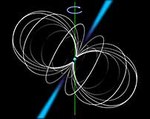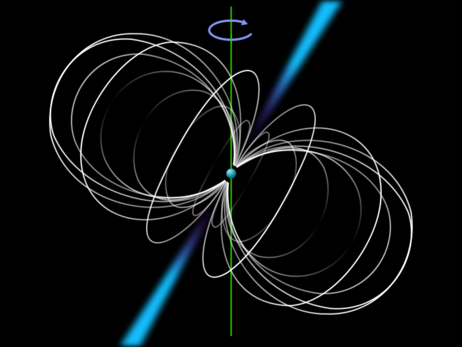Mystery Star Found by Crowdsourcing Project
Published Feb-01-16Breakthrough:
How crowdsourcing led to the discovery of a previously unknown pulsar, a rapidly spinning neutron star.
Company:
Zooniverse, United Kingdom
The Story:
 While brilliant scientific research is carried out by scientists in labs all over the world, it is not the only way that wonderful new discoveries are made. Increasingly, citizen scientists are adding to our body of scientific knowledge through numerous crowdsourcing initiatives.
While brilliant scientific research is carried out by scientists in labs all over the world, it is not the only way that wonderful new discoveries are made. Increasingly, citizen scientists are adding to our body of scientific knowledge through numerous crowdsourcing initiatives. This thinking outside the lab involves volunteers from all walks of life, not just those with an education in the sciences. In fact, many crowdsourcing science projects require no scientific training whatsoever, but they are invaluable because the crowd is able to sift through massive volumes of data, thereby saving time and speeding up research. They also allow lab-based scientists to focus on other aspects of their research.
Rewards
Those members of the crowd who do participate are rewarded by playing a part in important research efforts, whether it's helping to uncover the building blocks of the Universe, monitor wildlife in urban settings or analyse life on the ocean floor.
Hunting for Unusual Stars
Pulsar Hunters was a citizen project hosted by Zooniverse and launched on BBC television's Stargazing Live program. During a three-day period in January 2016, citizen scientists looked at 200,000 pulsar candidates that had been initially observed with the 100-meter Effelsberg radio telescope in Germany.
Pulsars are rapidly spinning neutron stars that emit periodic pulses of radiation. They are small and dense remnants of much larger stars that have collapsed. It is said that a teaspoon of matter from a neutron star would weigh as much as Mount Everest.
Streamlining Scientific Research
Due to the work of the crowd, 110,000 pulsar candidates were rejected automatically, streamlining the process of pulsar detection. In total, three million classifications were made in three days, and researchers performed an in-depth inspection of the best candidates.
One of the difficulties of this type of work is that radio interference such as telecommunications can appear to be very similar to pulsar signals, so it has to be weeded out. Consequently, only 1% of candidates for pulsars typically get through the initial inspection stage.
In this project, those that remained were subject to further investigation using the Effelsberg radio telescope and the 76-meter Lovell radio telescope at Jodrell Bank in the UK.
If the same repeating signal as the original observation is detected, it is almost likely to be of astronomical origin. Further checks confirm whether or not it is actually a pulsar.
They’ve Got One!
The result of all this activity was that researchers discovered one true pulsar. At the time of writing this article, investigations were still ongoing, so more may turn up.
According to the team behind Pulsar Hunters it would have taken scientists several years to go through all the data, yet the crowdsourcing approach made light work of the information in just three days. That was a huge time saving. Pulsar Hunters went so far as to say that the discoveries they made wouldn’t have been possible without the contributions of the entire community!
Next Story »

